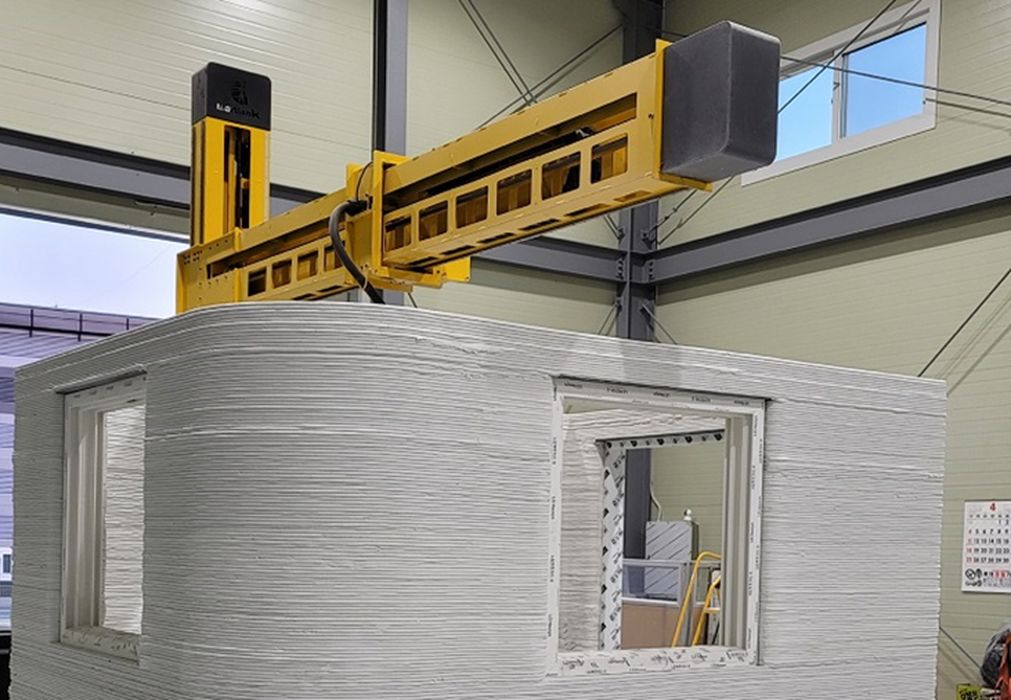
Charles R. Goulding and Preeti Sulibhavi look at the use of 3D printing by two large Korean companies, Doosan and Samsung.
Doosan is a Korean manufacturing global giant in the heavy equipment industry. In 2020 alone, Doosan generated sales of about 2.4 trillion Korean Won and employed around 41,400 employees in 38 countries. Founded in 1896 in South Korea, Doosan is now a global leader in construction and manufacturing equipment in addition to a wide range of other advanced technologies including drone power packs, collaborative robots and 3D printing systems.
Doosan’s involvement and expertise in 3D printing date back several years. Ever since Doosan signed the “MoU for Cooperation on Aircraft Forgings and Localized 3D Printing-Based Manufacturing” with Korea Aerospace Industries (KAI) in 2019, the company has been working on applying 3D printing technology to parts manufacturing for the KF-21 fighter jet. As part of the efforts to promote more localized manufacturing of components, the two parties plan to actively apply 3D printing technology in the mass production of products as well.
“We had already been applying 3D printing technology in the manufacturing of gas turbine parts for power plants, but this recent accomplishment is significant as we have now widened the scope of application to include parts manufacturing for the aerospace and defense industries as well,” said Yongjin Song, CSO of Doosan Heavy Industries & Construction.
The 3D printing technology applied in the parts manufacturing process is a technique that uses a laser beam to melt and fuse together metal or plastic powder layer by layer to form a three-dimensional object. The benefits of the technology include helping save on manufacturing costs and dramatically reducing the time required for manufacturing.
For example, if a metal 3D printer is used to produce the parts for a gas turbine combustor, the nitrogen oxide emissions would drop by more than 40% and the delivery time would be shortened by more than 20% compared to the conventional machining and tooling process.

Another renowned Korean company that is deeply invested in 3D printing technology is Samsung. Samsung Engineering Co., the construction unit under Samsung Group, has developed a next-generation, 3D printing technology for construction equipment and succeeded in building a structure using the technology. The company started developing the technology in 2020 and succeeded in developing the 3D printing robot in early 2021.
3D printing also eliminates the need for separate construction preparation processes, including the making of molds and the installation of temporary structures for construction, while minimizing the generation of construction wastes through efficient material input and management.

The Korean government is investing in 3D printing technology very consistently. In 2017 it invested US$37M in 3D printing industry development, then in 2019 it invested US$52.7M to nurture the industry. In 2021, when the Covid crisis was less critical, the Korean government invested about US$86M in the 3D printing industry. The government in Korea is establishing a strong foundation for technology development while supporting various government departments with innovation.
The Research & Development Tax Credit
The now permanent Research and Development (R&D) Tax Credit is available for companies developing new or improved products, processes and/or software.
3D printing can help boost a company’s R&D Tax Credits. Wages for technical employees creating, testing, and revising 3D printed prototypes can be included as a percentage of eligible time spent for the R&D Tax Credit. Similarly, when used as a method of improving a process, time spent integrating 3D printing hardware and software counts as an eligible activity. Lastly, when used for modeling and preproduction, the costs of filaments consumed during the development process may also be recovered.
Whether it is used for creating and testing prototypes or for final production, 3D printing is a great indicator that R&D Credit eligible activities are taking place. Companies implementing this technology at any point should consider taking advantage of R&D Tax Credits.
Conclusion
Korea is a strategic ally for the U.S. in both geopolitical and 3D printing terms. It is time to acknowledge the contributions that Korea has made to the 3D printing industry and the vast list of advancements.

